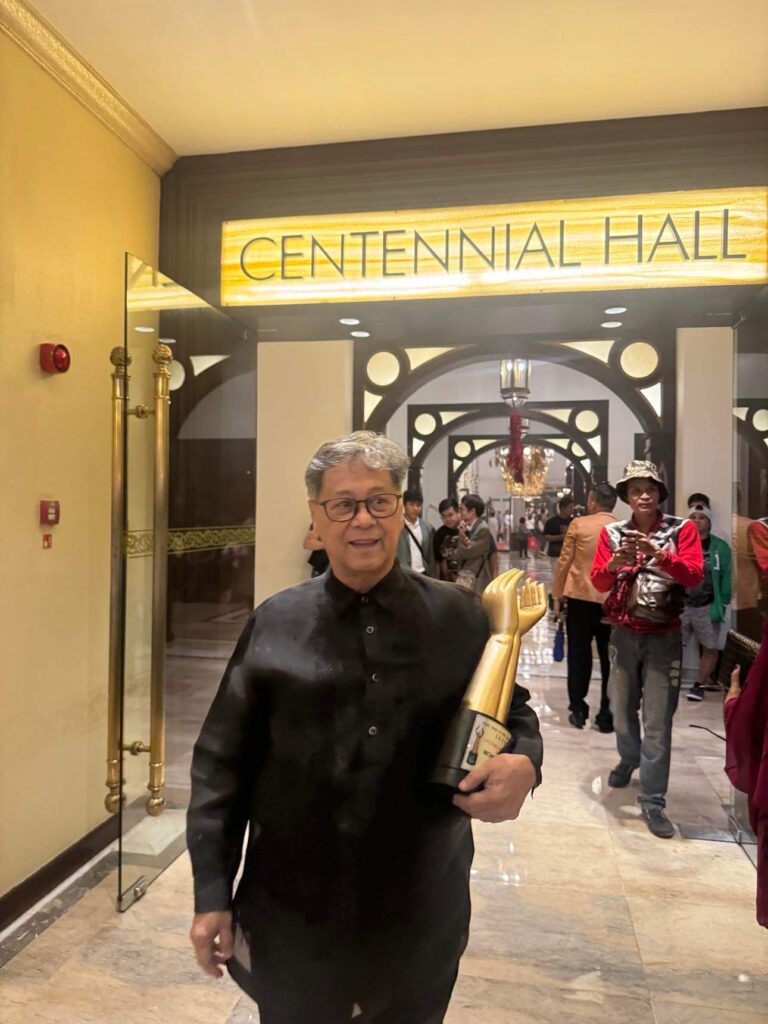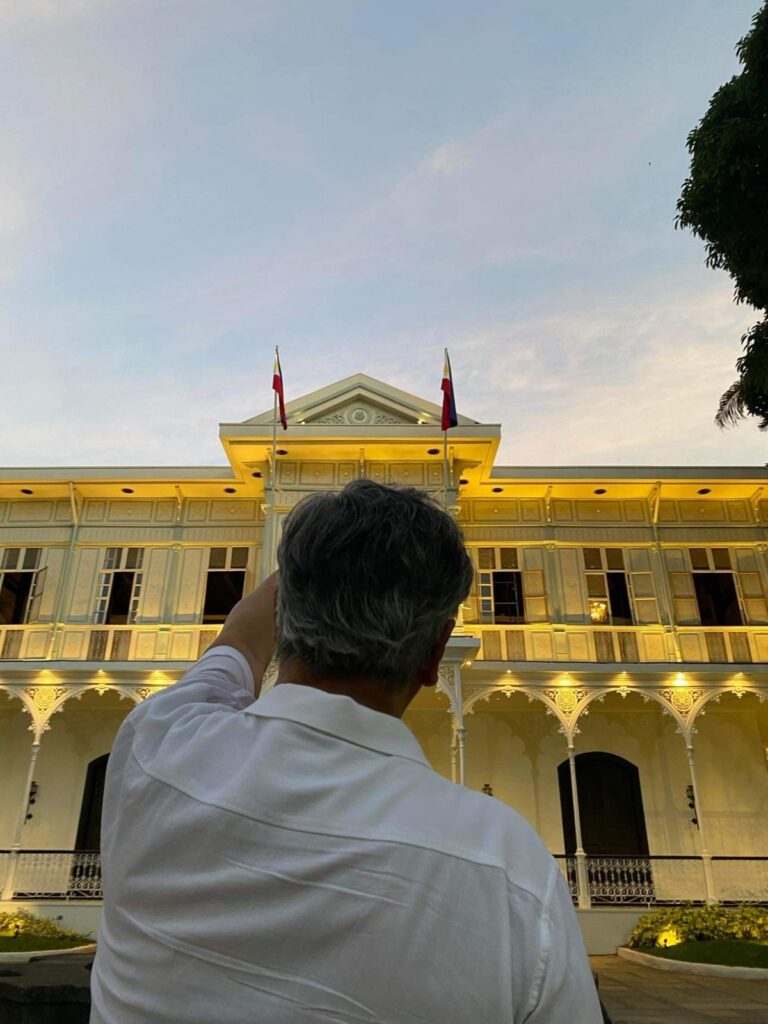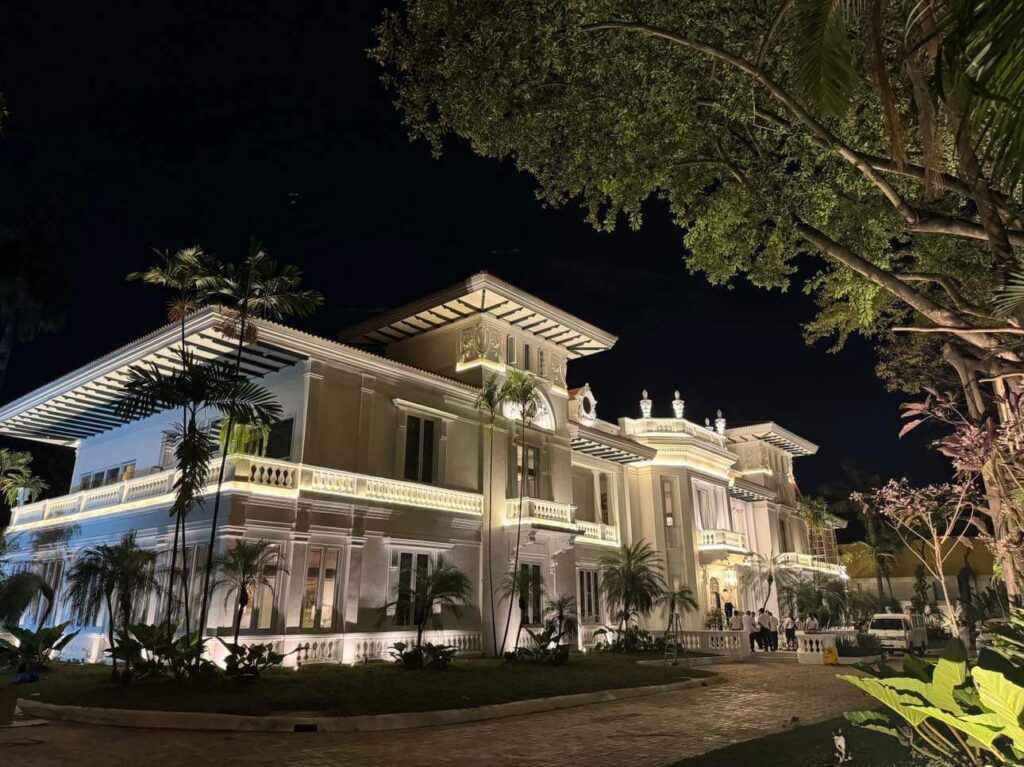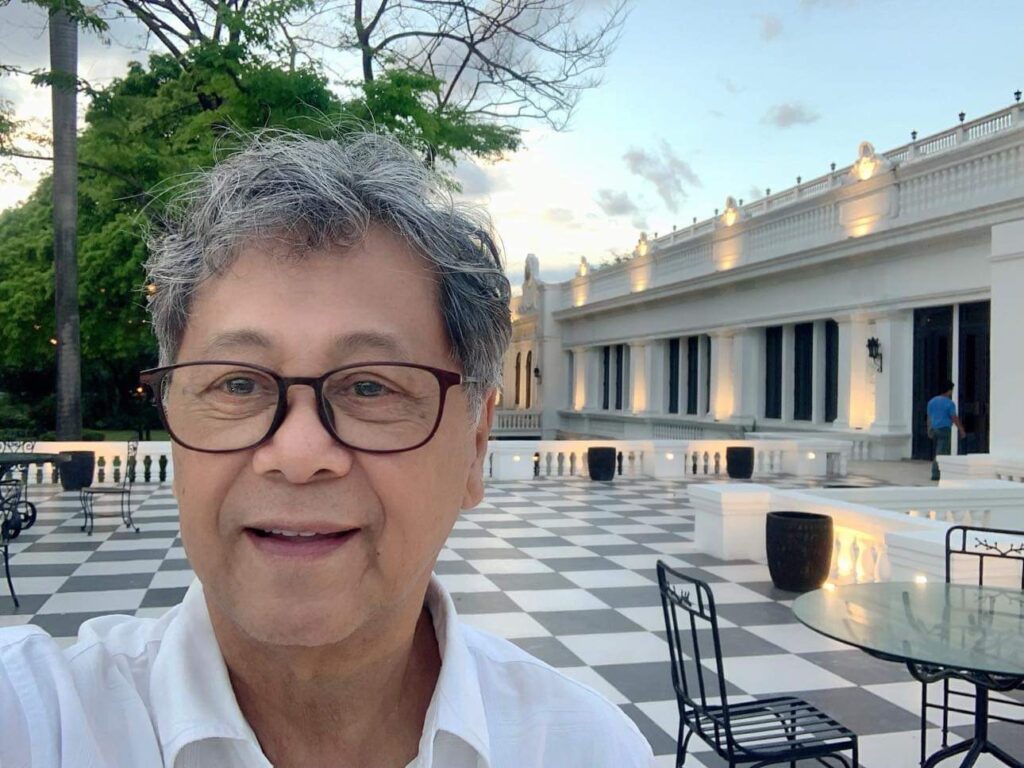The artist and cultural worker responsible for the beautiful lighting of the Malacañang Palace Goldenberg Mansion and Laperal Mansion has just taken his oath of office as a member of the Board of Trustees of the Cultural Center of the Philippines.

Monino Duque, who has worked as a lighting designer since a year after he acquired his communication arts degree from Ateneo de Manila University, has been responsible for many lighting projects at the CCP and other cultural venues all over the country for the last 40 years. He has also directed many theatrical presentations, concerts and festival extravaganzas in various parts of the country.
I recently had the pleasure of interviewing Monino, a dear friend, and he gladly shared his journey as a lighting designer, one of the few who have made their mark in this highly specialized aspect of theater work.
CCP’s 32nd employee
Daily Tribune (DT): Tell us how you were appointed as CCP Board trustee.
Monino Duque (MD): It all started last year when someone asked me if I could help the CCP by accepting to be on the board. Initially, I wasn’t too sure. But out of my deep friendship and respect for the lady who asked, a stalwart in Philippine arts, I said yes. It took time before I would receive my appointment. For a year, I got involved in various projects, including the lighting of Malacañang Palace and its heritage houses. I believe that I was asked to join the board was the number of years that I spent in the CCP.
DT: When did you join the CCP and how many years did you stay there?
MD: I joined in 1972 as the 32nd employee of a very small organization. The CCP then, for all the 25 years that I stayed, had maybe a thousand performances. So we had performances, activities and events almost every other day.
DT: Were you told the reason for your nomination?
MD: I guess that with my experience of 25 years with the CCP, they thought that there was something that I could do to help the institution. I think my long career as a theater person, as a lighting designer and as a theater practitioner added to my credentials.
DT: Not to mention also your awards.
MD: I received the Gawad CCP in 1980. Then, I got this award from the city of Manila for theater. I was nominated to be included in the list of 100 artists who have contributed to the Philippine arts when we celebrated our country’s centenary. I went as far as the short list.
World-Class Filipino talent
DT: Anyway, what have been your most significant gigs in the last five years?
MD: Actually, kaunti lang kasi retired na ako. But the major, major gig is my involvement with the Bambanti Festival of Isabela, which has grown and improved through time. I’ve been working at it for the past six years, and I have seen it evolve into one that is comparable with the biggest festivals in the country. Initially as a lighting designer for the festival and then eventually I became the director of the festival musical, one of the main events of the Bambanti Festival.

Then, I think a significant event was the 2017 ASEAN summit that was attended by 21 heads of state.
DT: What made our ASEAN project special?
MD: Maganda yan kasi ang concept ko dyan (It was good because my concept for it was ) I did not want to highlight folk elements although one of the numbers that was done by the Sining Kumintang Folk Dance Company… I wanted a world-class show. Something that the whole world would understand and appreciate because my message was we are a country of world-class talents. Besides, all past ASEAN shows always emphasized the folk arts. I felt that the country leaders had had enough of that.
My concept for the show was that there was no set on the floor. Everything was a sculpture. I wanted the sculpture hovering over the performance. It was simple, and that involved over a thousand performers.
Lighting the Filipino Flag
DT: How did you become involved in lighting the Palace?
MD: I was already involved right after the presidential inauguration. I was asked to help brighten up the Palace. And from then on, I’ve been asked by the social secretary, Bianca Zobel, to help. It started with lighting the Malacañang Palace. And once, I had this realization that the most important part that needed to be lighted properly and brightly was the Philippine flag on its pole. At the time, it was dimly lit. Very dark, in fact. I noticed, too, that all the flags on JP Laurel Street were also in the dark. So, I felt it should not be so because a flag is a symbol of the country. I felt it was important to give focus on and attention to the flags that were lining the Palace and the roads.

Then, I lighted the Goldenberg Mansion. Just recently, I turned over the lighting of the Laperal or Arlegui Mansion, which has been designated as the presidential guest house.

DT: Have you been working with the CCP staff and management?
MD: I have not had any recent project at the CCP. I retired in 1995 for a while, and after that, I had a few projects when Nes (Jardin) was president. So, Nes would assign me to direct some of the shows that they had. But after Nes retired as president, wala na akong masyadong (I did not have as much) projects sa (in) CCP.
But of the people I worked with in the past as technical directors and as managers, they now belong to the top management of the CCP, the most important of whom is the artistic director, Dennis Marasigan, who was in my department when I was the head of the theater operations, which handled all the theaters that were managed by the CCP, namely, the CCP theaters, the Main Theater, the small and the Little Theater, Bulwagang Gantimpala, which is the lab theater, the Manila Film Center, the Folk Arts Theater, and then the theatre in Mt. Makiling, the National Arts Center.
And Dennis, who was on my staff as technical director, was head of all of the technical aspects of those theaters. Now he is the artistic director of the CCP.
Helping shape the future of CCP
DT: How do you intend to make a difference in the CCP Board of Trustees?
MD: Hopefully, I will be able to contribute to shaping the future of the CCP because I believe that after 50 years, we should reevaluate what it has done and look forward to or plan on what the CCP as an institution would offer for the next 50 years.
DT: What are your most significant contributions to light design?
MD: Now, that’s difficult to answer as I would not want to blow my own horn. Just look at my works. Ayokong magbuhat ng sarili kong bangko (I do not want to promote myself) and say that these are my contributions. Maybe you should ask somebody else to find out what my contributions are.
DT: You are exceptional. You seem to be well-trained.
MD: I know that I was the second trained lighting designer in the country. The first was Teddy Hilado, my boss. But I don’t want to say that I was the second. It doesn’t sound modest.
His father inspires him
DT: Who have been the mentors who contributed to your mastery of your art?
MD: Life is my greatest mentor. Everything around me. Every single moment that I am awake, when I look around, those are the things that inspire me to do great work. Everything that I see around me inspires me to create.
To be more specific, Teddy Hilado, who was my boss at the CCP, had been a major influence in my career as a lighting person. And siyempre, medyo cliche, medyo baduy, pero siyempre (And of course, it’s a little cliche, a little uncool, but), I believe that Delfin, my partner of 24 years, inspired me to do work. Because he was a dancer. And I believe that my present partner, although far away, inspires me every time that I do something. Every time that I design. Every time that I light. Baduy, ano? And most importantly, my parents inspired me. My family inspired me. Especially my father. Because he said, ‘The only thing I can give you is my name. Take care of it.’ So with those words from my father, I always make sure that I try to do a good job.
DT: What will you bring to the board?
MD: So many things come to mind, but nothing is definite yet, as I have just begun in the board. Wala pa nga akong isang buwan (It has not even been a month). But I think what I want to put to the fore is to crystallize what the CCP wants to be in the next 50 years. Because I think after 54 years, I think it’s time to reevaluate and look at the CCP in the context of its initial mandate in 1970, 1969 when it opened. And cross-check that with what it wants to do when it opens in 2026. Because I believe that the CCP, after 54 years, needs to reevaluate. Maybe rediscover a new direction. Because the CCP has evolved. So I think it’s important that it goes with the times. It needs to change. It cannot be static.The programs of institutions have to be reevaluated. They have to be checked whether they were successful or not. And it should be forward-looking. Para sa akin, yun ang pinakaimportante (For me, those are most important).

DT: What does the CCP need to address today and in the coming years?
MD: I think the CCP has to find meaning in itself and how it can be meaningful to the cultural life of the country.
A promising apprentice whose name he won’t tell
DT: What is the future of light design in the Philippines?
MD: It has a very beautiful future. Kasi marami nang taong nag-iilaw. Ang wish ko lang para sa kanila (Because there are many now who are doing lighting design. My only wish for them) is that they study. Huwag tamad magtrabaho (Don’t be lazy to work). They should study.
DT: Of the young lighting designers, whom do you admire and consider promising?
MD: Alam mo, Jo, mayroon akong apprentice. Para sa akin, siguro ‘yun ang may future. Huwag ko namg babanggitin yung pangalan. Pero I think, kasi ang tagal kong naghintay. Sabi ko (You know, I have an apprentice. For me, that one has a future. I won’t mention the name, but I think… because I have waited for so long. I said), it took me a long time to find somebody who has the interest, the dedication to learning. Of course, marami naman diyan, pero siyempre, ako I believe that yung pinag-aaksayuhan ko ng panahon in teaching and training, I would think na siya ang may future (there are plenty out there, but of course, for me, the person I have taken the time go teach and train, I would think that person is the one who will go far).”
